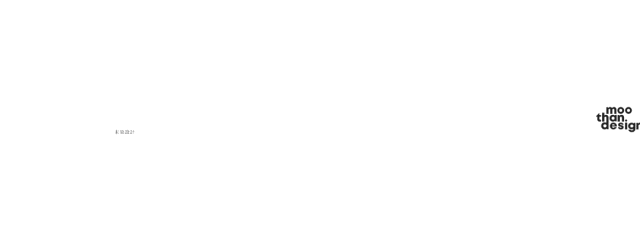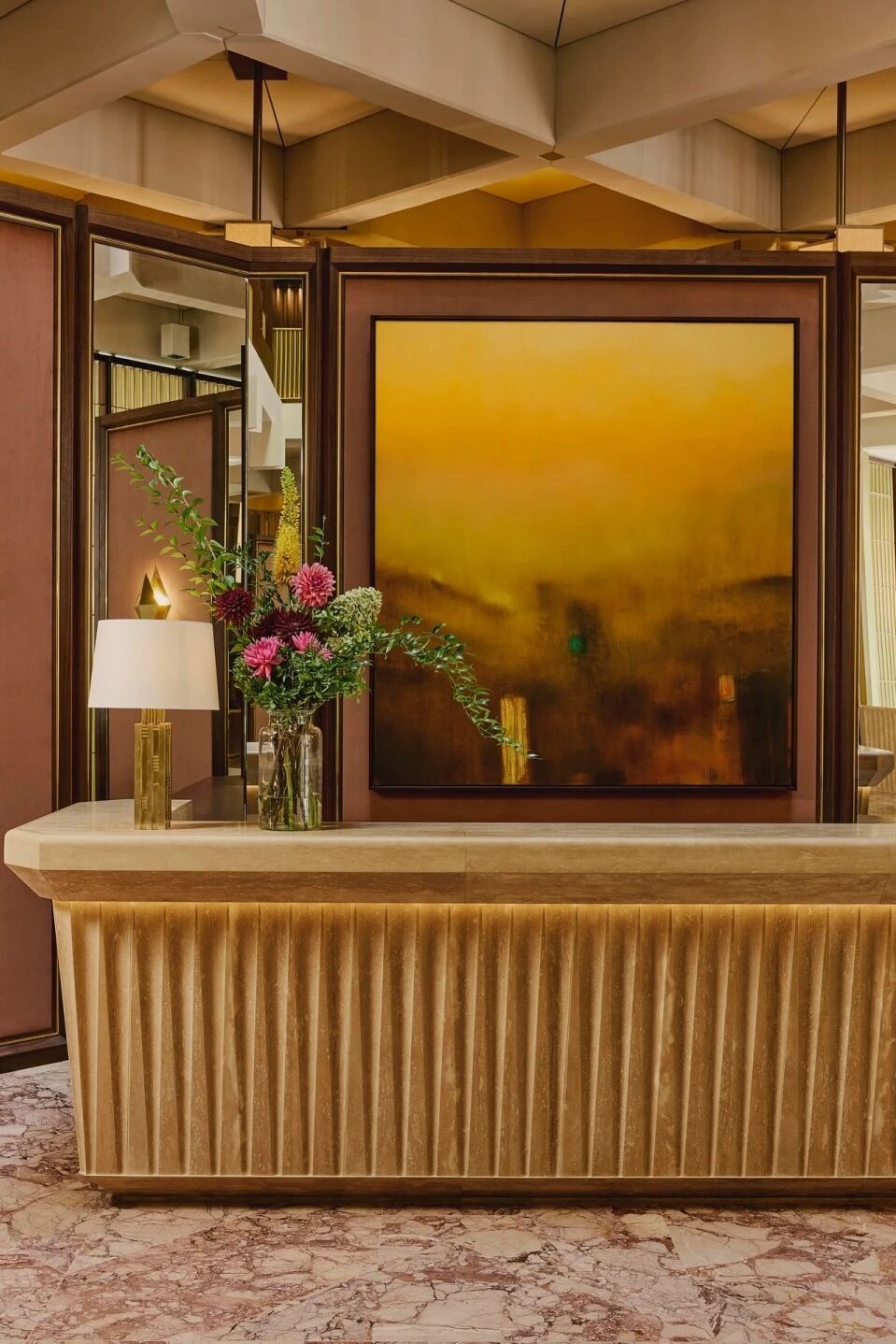Prague Brutally Beautiful: Exceptional Buildings Constructed in Prague Between 1969 and 1989
2019-06-01 15:04
Project: Scholastika | Prague Brutally Beautiful Authors: Ondřej Horák, Michaela Janečková, Pavel Karous, Petr Klíma, Rostislav Koryčánek, Petr Kučera, Adam Štěch, Vladimir 518 Photographers: Tomáš Souček, Petr Polák, Filip Šlapal, BoysPlayNice Publisher: Scholastika, Prague, 2018
项目:见义勇为的作者:ondřEJ Horák,Michaela Janečková,Pavel Karous,Petr Klíma,Rostislav Koryčánek,Petr Kučera,AdamŠtě,Vladimir 518名摄影师:TomášSouček,Petr Polák,FilipŠLapal,BoysPlayNice出版社:Schoestika,布拉格,2018年
With brutalist architecture irreversibly disappearing from Prague’s landscape a debate was sparked amongst the industry professionals as well as the general public on the necessary protection of these structures and their architectural, artistic and sociohistorical value.
随着野蛮建筑不可逆转地从布拉格的景观中消失,业界专业人士以及公众对这些建筑的必要保护及其建筑、艺术和社会历史价值引发了一场辩论。
After organising series of guided tours and lectures by renowned theoreticians, artist and architects, Scholastika published a book Prague Brutally Beautiful featuring exceptional buildings built in Prague between 1969 and 1989.
在组织了一系列由著名理论家、艺术家和建筑师主持的导游和讲座之后,肖勒斯泰卡出版了一本书“布拉格残酷的美丽”,讲述了1969年至1989年期间在布拉格建造的杰出建筑。
“In fact, the buildings are not only the bearers of interesting and bold architecture by distinguished personalities. We tend to forget a lot from our past. These objects, however, do not allow this, they are part of our collective memory. Our past. Moreover, they are beautiful. Brutally beautiful.”
他说:“事实上,这些建筑物不单是杰出人士对有趣而大胆的建筑的承担者。我们往往会从过去中忘记很多东西。然而,这些对象不允许这样做,它们是我们集体记忆的一部分。我们的过去。而且,它们很漂亮。真是太美了。“
In January 2014, hotel with the symbolic title Praha starts to irrecoverably disappear from the city landscape. For a long time, industry professionals as well as the general public, gradually realized the extraordinary situation that transcends the topic of architecture. The demolition of the hotel originally built for Communist bigwigs and international government delegations sparked a debate on the necessary protection of these types of buildings.
2014年1月,具有象征意义的普拉哈酒店开始从城市景观中消失。长期以来,业界人士以及广大公众逐渐意识到了超越建筑主题的特殊情况。最初为共产党大人物和国际政府代表团建造的酒店被拆除,引发了对这类建筑进行必要保护的辩论。
Perhaps for the first time, inhabitants of more than just the capital have come to appreciate the architectural, artistic and socio-historic value of such objects. What irritated the public in the first place was the way the hotel was demolished, because it was almost identical to the one represented by the almighty Communist government.
也许这是第一次,不仅仅是首都的居民开始欣赏这些文物的建筑、艺术和社会历史价值。最让公众恼火的是酒店被拆毁的方式,因为它几乎和全能的共产党政府所代表的一样。
Evaluating architecture is not easy. The tragic story of Hotel Praha is by far not only the question of beauty and ugliness, function and uselessness, not even the size. Maybe it was not much about the hotel as such. Critics of the demolition were outraged by the fact that out of sheer caprice, any owner could make a building disappear forever. It is enough to label it “not functional” and/or “ugly” and there is no existing way to avoid its demolition. Above all – if such intention affects the history of any one building there exists no guarantee that it will not happen again.
评估架构是不容易的。普拉塔酒店的悲剧故事不仅是美丽与丑陋、功能和无用的问题,甚至是大小的问题。也许酒店并不像这样。对拆迁的批评人士感到愤怒的是,从纯粹的Caprice中,任何拥有人都能使建筑物永远消失。它足以将其标记为“不正常”和/或“丑陋的”,并且没有现有的方法来避免它的拆除。最重要的是,如果这种意图影响到任何一个建筑物的历史,则不存在不会再次发生这种意图的保证。
Hotel Praha symbolizes another significant question our society has been dealing with since the beginning of the Nineties: Is it at all possible to remove the label “Communist barrack” from buildings that were initially created with the purpose of representing the “one-party government” of the socialist Czechoslovakia?
Praha酒店象征着我们社会自九十年代初以来一直在处理的另一个重大问题:是否有可能从最初创建的建筑中删除“共产党营房”标签,这些建筑最初是为了代表捷克斯洛伐克的“一个党政府”?
One can understand the older generation quite well that the house of socialist Federal Assembly will be forever linked to the unanimously voting Communist Party MPs. Appreciation for the architectural solution of Žižkov TV Tower will be equally difficult for the locals, who observed the vans carrying Jewish tombstones, multiple hundreds of years old, away from the original graveyard and to a dumping ground. Nevertheless, today it is clear that a certain amount of time is necessary to clear off the ideological layer. And then only pure architecture and its function remains.
我们可以很好地理解老一辈,社会主义联邦议会的议院将永远与一致投票的共产党议员联系在一起。对于当地人来说,对ŽIž科夫电视塔的建筑解决方案的欣赏将同样困难。当地人观察到,运载着数百年历史的犹太墓碑的面包车,远离了原始的墓地,来到了一个倾倒场。然而,今天很明显,要清除意识形态层面,还需要一定的时间。然后只有纯粹的建筑和它的功能仍然存在。
Provocative dimensions – not typical in Prague – and dominant size go beyond the regular and respected criteria. These indeed present other significant reasons for contempt of such architecture. Bold but also forced in a silly way, elegant but also hulky, monumental but also heavy. But especially big. Communist power is definitely not discreet and its ideology often interferes in ordinary people’s lives and crushes them. This is why these “brutal” buildings provoke so much. Such architecture is necessarily perceived with a certain dose of skepticism. It is part of the architecture as much as an interest rate that needs to be paid.
挑衅性的规模-在布拉格并不典型-占主导地位的规模超出了常规和受尊重的标准。这些确实是蔑视这种结构的其他重要原因。大胆但也强迫在一种愚蠢的方式,优雅但也厚重,纪念碑但也沉重。但特别大。共产党的权力绝对是不谨慎的,它的意识形态常常干涉和粉碎普通百姓的生活。这就是为什么这些“残酷”的建筑引起了如此多的争议。这种架构必然会受到一定程度的怀疑。它既是体系结构的一部分,也是需要支付的利率。
Since the fall of Communism in Czechoslovakia, people have been trying to find a way to deal with this kind of architecture. The first reaction is to try to get rid of the remains, demolish them, repaint or at least rename them. A lack of any protection for these objects and installations made them a simple target. Architecturally valuable constructions are being removed from the urban space without a proper replacement.
自从捷克斯洛伐克共产主义垮台以来,人们一直在设法解决这种建筑问题。第一种反应是设法处理掉遗骸,拆除它们,重新油漆,或者至少重命名它们。由于缺乏对这些对象和安装的任何保护,使它们成为一个简单的目标。在没有适当的替换的情况下,有建筑价值的建筑正在被从城市空间中移走。
Sculptures, objects, and architectural installations disappear from city parks and housing estates. Exquisite interiors and elements of design and applied art inside many buildings are irretrievably destroyed. A number of objects are reconstructed beyond recognition. It will take some more time until the loathing projected into the walls will transform into respect and understanding.
雕塑、物体和建筑设施从城市公园和屋苑消失。许多建筑内部精美的内饰、设计元素和应用艺术都遭到了不可挽回的破坏。许多物体被重建而无法识别。这将需要更多的时间,直到厌恶投射到墙壁将转化为尊重和理解。
Buildings from the 70s and 80s, from the “tough,” then “creeping,” and eventually maybe even “consoling” normalisation became the centre of attention for the public that long regarded them as ugly. Society starts to realize their original beauty and courage, with which they were designed. Maybe another reason is that the contemporary architecture does not offer any other interesting alternatives in Prague. In any case, the time passed since their creation can suddenly give us more.
70年代和80年代的建筑,从“强硬”到“悄悄的”,最终甚至可能是“安慰”正常化,成为公众关注的中心,公众长期以来一直认为它们是丑陋的。社会开始意识到他们最初的美丽和勇气,这是他们设计的。也许另一个原因是当代建筑在布拉格没有提供任何其他有趣的选择。在任何情况下,时间的流逝,他们的创造可能会突然给我们更多。
In fact, the buildings are not only the bearers of interesting and bold architecture by distinguished personalities. We tend to forget a lot from our past. These objects, however, do not allow this, they are part of our collective memory. Our past. Moreover, they are beautiful. Brutally beautiful.
事实上,这些建筑不仅是由杰出的人物所承载的有趣和大胆的建筑。我们往往忘记过去的事情。然而,这些对象不允许这样做,它们是我们集体记忆的一部分。我们的过去而且,它们是美丽的。真漂亮
List of Buildings and Photographers: (Photographer | Project Name / Architect / Construction Years)
建筑物和摄影师名单:(摄影师/项目名称/建筑师/建筑年份)
REPRESENTATIVE AND CULTURAL BUILDINGS – Tomáš Souček | Federal Assembly Building / Karel Prager, Jiří Kadeřábek, Jiří Albrecht / 1966-1973 – Tomáš Souček | Palace of Culture / Jaroslav Mayer, Ivan Lejčar, Josef Karlík, Jaroslav Trávníček / 1976-1981 – Filip Šlapal | New Scene of the National Theatre / Karel Prager, Jaroslava Brychtová, Stanislav Libenský / 1977-1983
代表和文化建筑-TomášSouček Federal Assembly Building/卡雷尔·普拉格,冀říKadeřábek,jiříAlbrecht/1966-1973-TomášSouček宫殿/Jaroslav Mayer,Ivan Lejčar,Josefík,Jaroslav Trávníček/1976-1981-菲利普·拉帕尔-国家剧院/卡雷尔·普拉格、雅罗斯拉瓦·布莱切托瓦、斯坦尼斯拉夫·利本斯基́/1977-1983
ADMINISTRATIVE BUILDINGS – Petr Polák | Koospol / Vladimír Fencl, Stanislav Franc, Jan Nováček / 1974-1977 – Petr Polák | PZO Centrotex / Václav Hilský, Otakar Jurenka / 1972-1978 – Petr Polák | Czechoslovakian State Bank / Karel Prager / 1977-1992
行政大楼-Petr Polák连Koospol/Vladimír Fencl,Stanislav Franc,Jan Nováček/1974-1977-Petr Polák Przo Centrotex/Václv Hilský,Otakar Jurenka/1972-1978-Petr Polák=捷克斯洛伐克国家银行/卡雷尔普拉格/1977-1992
DEPARTMENT STORES – Petr Polák | House of Dwelling Culture (DBK) / Věra Machoninová / 1972-1981
百货公司-Petr Polák区住宅文化之家(DBK)/Věra Machoninová/1972-1981年
HOTEL FACILITIES – BoysPlayNice | Parkhotel / Zdeněk Edel, Jiří Lavička, Alena Šrámková / 1964-1967 – BoysPlayNice | Intercontinental Hotel / Karel Filsak, Karel Bubeníček, Jan Bočan, Jaroslav Švec / 1968-1974 – BoysPlayNice | Hotel President / Karel Filsak, Václav Hacmace, Karel Filsak Jr. / 1974-1978
酒店设施-Boysplay漂亮|ParkHotel/ZenhenkEudel,JiangHollishinka,Alena,RhoonMkovin/1964-1967-BoysPlaynice|洲际酒店/KarelFilsak,KarelBuenhang,Ek,JanBoeholeanAN,Jaroslav,VEC/1968-1974-BoysPlaybood|酒店总裁/KarelFilsak,VacoClaVHaMACE,KarelFilsakJR./1974-1978
DETACHED HOUSES – Petr Polák | Hadovka / Josef Polák, Vojtěch Šalda / 1966-1970 – Petr Polák | South City Housing Estate / Jan Zelený, Jiří Rathouský, Vítězslava Rothbauerová / 1971-1980
独立房屋-Petr Polák Hadovka/Josef Polák,VojtěchŠAlda/1966-1970-Petr Polák South City HomeEstate/Jan Zelený,jiříRadomský,Vítězslava Rothbauerováa/1971-1980
OBJECTS IN PUBLIC SPACES – Petr Polák | Sculptures on Barrandov Bridge / Josef Klimeš / 1989 – BoysPlayNice | Sculpture Items / Miloslav Chlupáč / 1972
公共空间中的物体-Barrandov桥上的Petr Polák连雕塑/Josef Klimaš/1989-BoysPlay尼斯雕塑项目/Miloslav Chlupáč/1972
TECHNICAL BUILDINGS – Petr Polák | Central Control Station DPP / Eva Růžičková, Vratislav Růžička / 1972-1978 – Petr Polák | Žižkov TV Tower / Václav Aulický, Juraj Kozák, Alex Bém / 1985-1992 – Filip Šlapal | Transgas / Václav Aulický, Jiří Eisenreich, Ivo Loos, Jindřich Malátek / 1972-1978
技术建筑物-Petr Polák Central Control Station DPP/Eva RůžIčková,Vratislav Růžička/1972-1978-Petr PolákŽižkov电视塔/Václv Aulický,Juraj Kozák,Alex Bém/1985-1992-FilipŠLapal Transgas/Váchiv Aulický,jiříEisenreich,Ivo Loos,Jindřich Malátek/1972-1978
 举报
举报
别默默的看了,快登录帮我评论一下吧!:)
注册
登录
更多评论
相关文章
-

描边风设计中,最容易犯的8种问题分析
2018年走过了四分之一,LOGO设计趋势也清晰了LOGO设计
-

描边风设计中,最容易犯的8种问题分析
2018年走过了四分之一,LOGO设计趋势也清晰了LOGO设计
-

描边风设计中,最容易犯的8种问题分析
2018年走过了四分之一,LOGO设计趋势也清晰了LOGO设计








































































